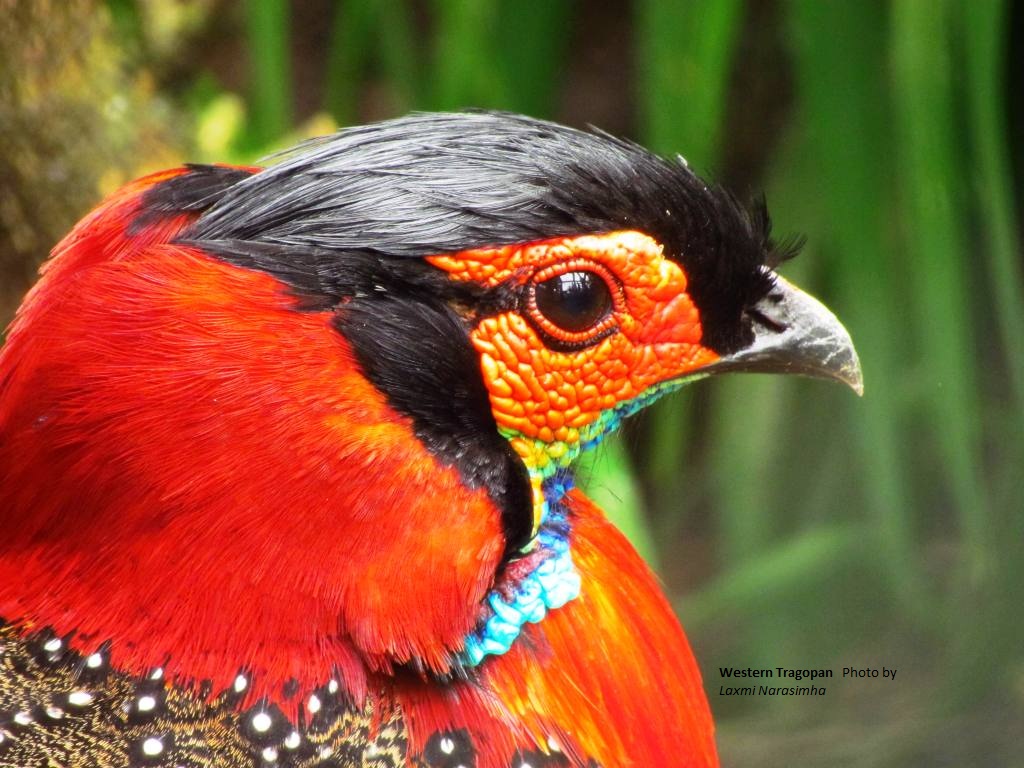
Western Tragopan is among the rarest pheasants, endemic to a narrow range in the temperate region of the Greater Himalaya, between Northwest Frontier Province in Pakistan and western Uttarakhand in India (Birdlife International 2001). With only 2,000-3,000 sq. km area of potential habitat available, its world population size is precariously low, with much fewer than 5,000 individuals as per the estimate in early 1980s. This species is a habitat specialist, favouring conifer and oak communities with sufficient undergrowth of bamboo and other dense vegetation. The state of Himachal Pradesh is a stronghold for this species as it is distributed widely in sizable populations in all three major catchments (Beas, Satluj and Ravi) and also serves ‘flagship’ value on account of socio-cultural linkages with the traditional people. These attributes essentially guided the successful declaration of Western tragopan as 'the State Bird’ of Himachal Pradesh.
While concerted efforts are continuing for in-situ management within the limits of resource pool (both fiscal and trained man-power), conservation breeding of Western Tragopan has long been included in the conservation agenda of the State, attributed to (a) small population size of the species in the wild, (b) virtually no captive population anywhere in the world, and (c) no credible technical know-how for breeding the species in captivity. Presently, there are 24 captive birds in Sarahan Pheasantry which is the only place in the world to hold Western Tragopan in captivity.
Given the conservation significance attached to Western Tragopan, it is important to maintain a viable captive population (ex-situ conservation) and it has huge potential for supporting conservation in the wild by supplementing individuals to existing populations and reintroduction wherever required. Although it may not be a desperate necessity to reintroduce this species in wild at present, the species is likely to face such situation if the prevailing conditions in the field continue. It is, therefore, critical that adequate scientific skills and infrastructure for captive breeding are developed.
Central Zoo Authority (CZA) of India had approved a Project for Conservation Breeding of Western Tragopan at Sarahan Pheasantry during 2003-04 for Rs. 493.90 lac in 2003 having CZA share Rs.364.95 lac and State share Rs.128.95. Conservation breeding which is breeding for supporting conservation in wild or in-situ conservation is highly challenging, particularly of rare and elusive species for which no prior successful experiences exist. Recently from 2010-11 onwards, Wildlife Institute of India has also been associated in this programme for effective implementation of this conservation programme both at in-situ and ex-situ level.
During the year 2012, a total of seven females incubated the eggs naturally, which represents nearly 75% of the individuals of the captive population and is the highest number of females incubating the eggs naturally till now. Seven chicks have been mother reared. A state wide survey has also been planned during the year 2013 across the distribution range to assess the status of the natural populations and threats to this species.
?© 2022 Himachal Pradesh Forest Department, Government of Himachal Pradesh. All rights reserved.
Content on this website is published and managed by HP Forest Department. For any query regarding this website, please contact the "Web Information Manager" at hpfd.itlab@gmail.com.